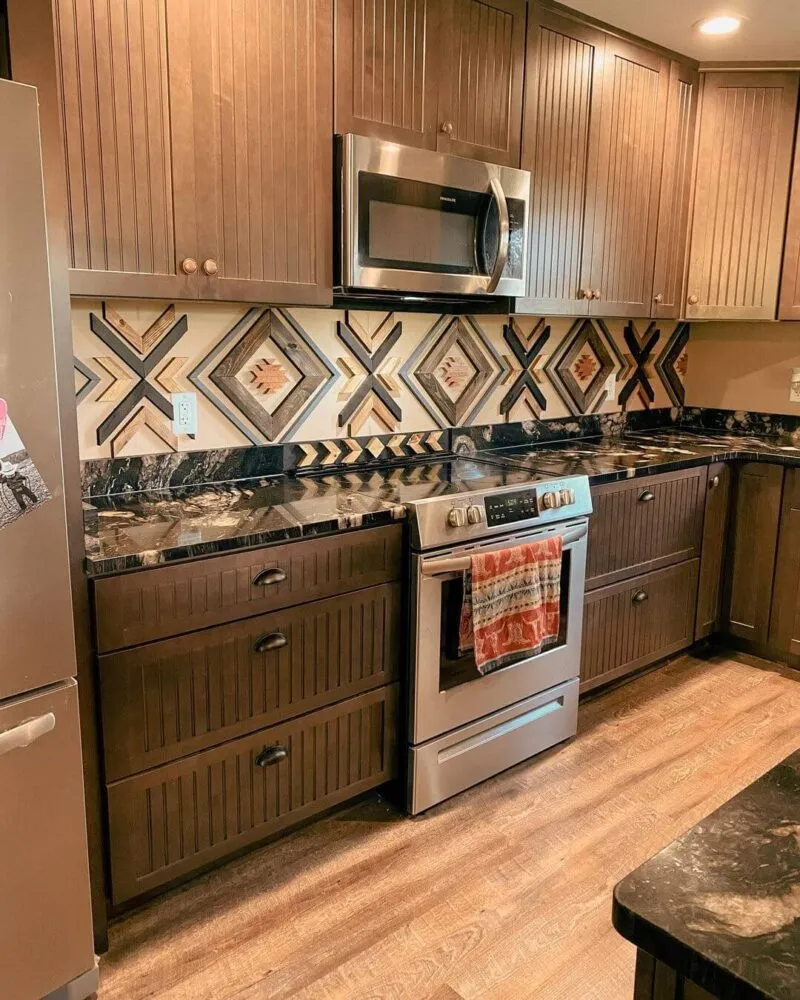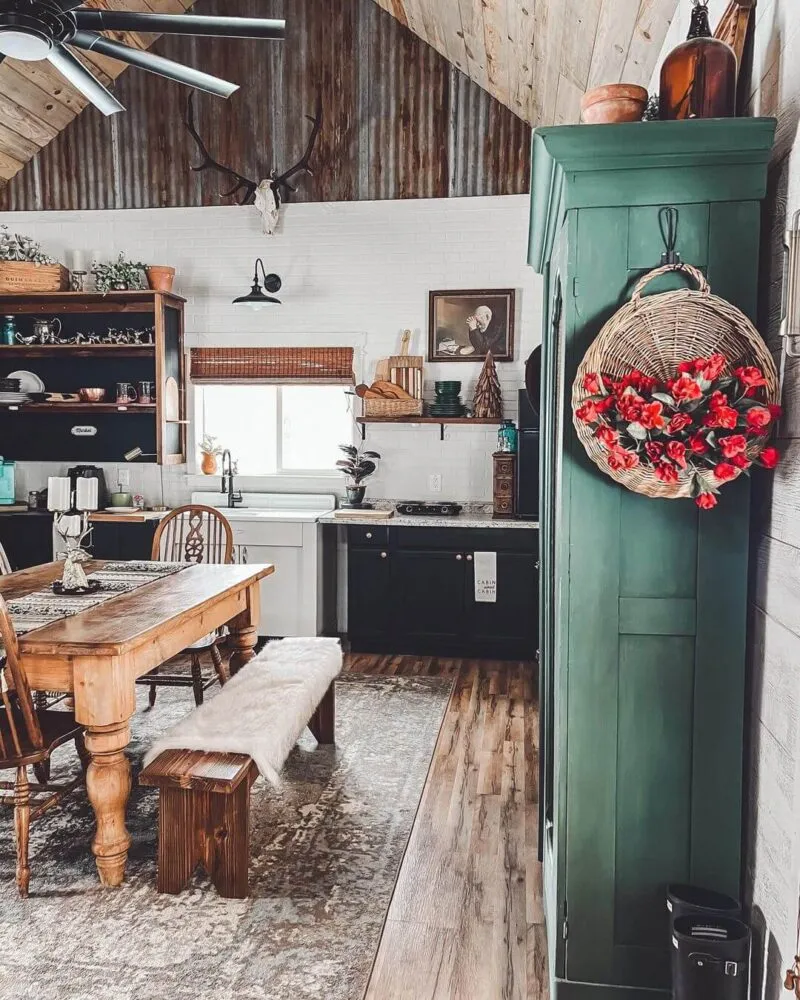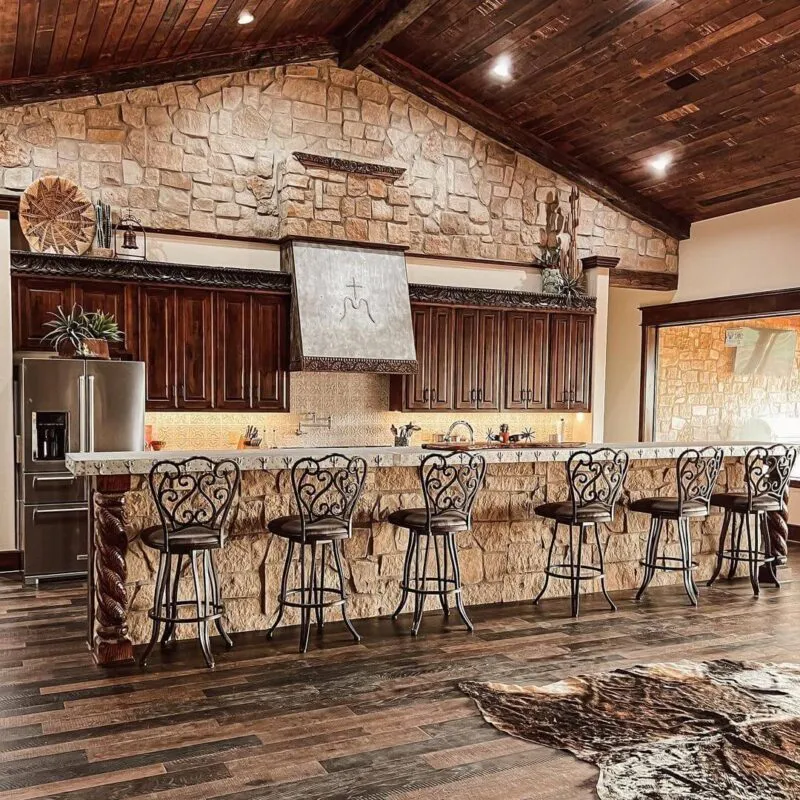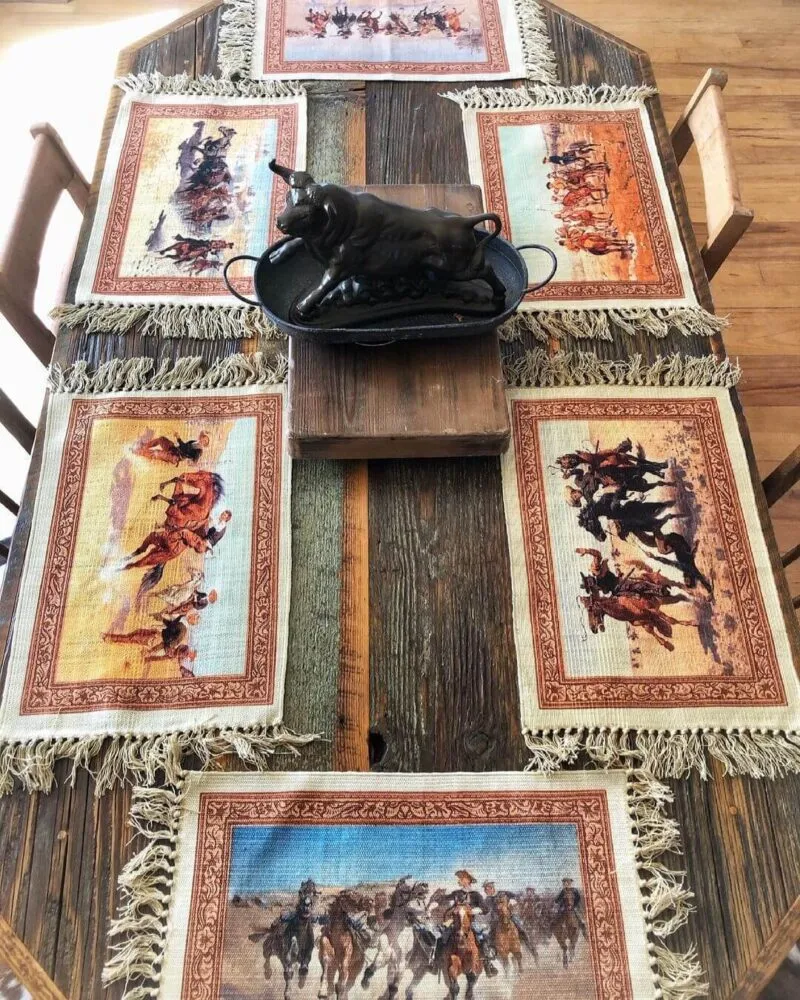What is Western Kitchen Decor
Western kitchen decor is more than just a design style, it’s an experience, a journey back to the rustic heart of the American West. It encompasses a blend of rugged charm, natural materials, and a welcoming atmosphere that evokes images of sprawling ranches, cozy cabins, and the spirit of the frontier. Characterized by its warmth, comfort, and connection to nature, the style typically incorporates elements like wood, stone, leather, and metal, alongside earthy color palettes. Think of a space where the scent of freshly baked bread mingles with the aroma of rich coffee, where family and friends gather around a large wooden table, and where the overall ambiance is one of relaxation and connection to the land. This style is not just about the way things look; it’s about the feeling they create, the story they tell, and the memories they help you make.
History of Western Kitchen Design
The roots of Western kitchen design run deep, mirroring the evolution of the American West itself. Initially, kitchens in the West were simple, utilitarian spaces. Early settlers and pioneers relied heavily on functionality, using readily available materials like wood and stone to build and furnish their homes. The focus was on practicality and durability, reflected in the use of heavy-duty furniture and the absence of unnecessary ornamentation. As time passed and the West grew, so did the sophistication of the design. Influences from Spanish, Native American, and other cultures began to blend with the existing aesthetic, creating a richer, more diverse design palette. The introduction of new technologies and materials also played a role, influencing kitchen design. Today, Western kitchen design represents a fusion of history, culture, and modern living. It continues to evolve, embracing new trends while staying true to its rustic and enduring character.
Key Elements of Western Kitchen Decor

Several key elements define a Western kitchen. The use of natural materials is paramount. Think rough-hewn wood for cabinetry, flooring, and beams, creating a sense of warmth and authenticity. Stone, whether in the form of countertops, backsplashes, or decorative accents, adds a touch of rugged elegance. Leather and metal are also common. Leather bar stools or chairs, and metal hardware or lighting fixtures, contribute to the rustic appeal. Furthermore, a Western kitchen typically features a neutral, earthy color palette with rich browns, creams, and tans as a base. Pops of color can be introduced through accessories, such as deep reds, oranges, or turquoise, echoing the vibrant landscapes of the West. Finally, the inclusion of themed décor is vital. Consider incorporating elements like wrought iron accents, cowhide rugs, or vintage kitchenware to amplify the Western theme.
Color Palette & Materials
The color palette in a Western kitchen is crucial for setting the atmosphere. Generally, it revolves around a foundation of earthy neutrals. Think of creamy whites, warm beiges, and various shades of brown, reminiscent of the desert landscape and timber used in construction. These colors provide a grounding base, allowing the other elements to shine. For accent colors, you can draw inspiration from the natural hues of the West. Deep reds and burnt oranges, inspired by the setting sun, can add warmth and vibrancy. Turquoise, reflecting the clear desert skies, can provide a cool contrast. Materials should also reflect the natural world. Wood is essential, whether it’s the warm tones of oak, the rustic appeal of reclaimed wood, or the rich textures of cedar. Stone countertops or backsplashes in granite or slate provide a durable and stylish surface. Metals, such as wrought iron or copper, can add character and visual interest. Lastly, leather accents on chairs or stools can complete the look.
Choosing the Right Furniture
When selecting furniture for your Western kitchen, prioritize pieces that embody durability, character, and a sense of history. Start with a substantial wooden dining table, preferably made from reclaimed wood or with a distressed finish, capable of seating family and friends. Complement this with sturdy chairs or benches, perhaps featuring leather or woven seats. The kitchen island is another focal point. Consider a large island with a butcher-block top or a stone countertop, and add some wrought iron hardware to give it a rustic charm. For storage, choose cabinets with a traditional design, either made of wood or metal. Open shelving can also work to display your favorite kitchenware. Finally, opt for bar stools with leather seats and metal frames for a casual eating area. The furniture pieces should be well-built and designed to last, adding an authentic touch to your Western kitchen design.
Adding Decorative Elements

Decorative elements are the soul of a Western kitchen design. Consider incorporating themed pieces to capture the essence of the West. Wrought iron accents are a great choice. Think of a wrought iron pot rack to hang your cookware, or decorative metal artwork on the walls. Cowhide rugs or animal prints can add texture and a touch of the wild West to your floors. Displaying vintage kitchenware can add a sense of history and character. Old enamelware, antique coffee grinders, or rustic mason jars can be arranged on open shelves. Additionally, incorporating natural elements such as antlers, branches, or decorative stones is a simple way to create a connection to the outdoors. Finally, framed artwork featuring Western landscapes, wildlife, or Native American motifs can enhance the ambiance and tell a visual story. Remember, the goal is to create a space that is visually appealing and reflects the unique character of the American West.
Lighting and Accessories
Lighting and accessories play a vital role in setting the mood and enhancing the Western aesthetic in your kitchen. For lighting, choose fixtures that complement the rustic design. Consider wrought iron chandeliers, pendant lights with Edison bulbs, or rustic sconces. These fixtures not only provide illumination but also add to the overall ambiance. For accessories, opt for items that reflect the spirit of the West. Display decorative trays, canisters, and utensil holders in natural materials such as wood, metal, or stone. Add a touch of personality with items like cowboy-themed salt and pepper shakers or a rustic clock on the wall. Think of incorporating practical items that contribute to the décor, such as a metal towel rack or a wooden cutting board. Always remember that accessories should complement the overall design, enhancing the rustic charm and creating a welcoming atmosphere.
Bringing it all together
Bringing all the elements together in a Western kitchen requires a cohesive approach. The key is to ensure that each element complements the others, creating a harmonious and inviting space. Begin by establishing a foundation with your color palette, using earthy neutrals as a base and incorporating accent colors to provide visual interest. Then, consider the materials. Incorporate wood, stone, leather, and metal to provide texture and character. Choose furniture that is both functional and aesthetically pleasing, ensuring that each piece contributes to the overall design. Add decorative elements that represent the spirit of the West, such as wrought iron accents, cowhide rugs, and vintage kitchenware. Finally, pay attention to lighting and accessories, ensuring they complement the rustic theme. With these elements in place, your Western kitchen will come to life, offering a warm, welcoming, and stylish space that embodies the spirit of the American West. Remember, it’s all about creating a space that feels authentic, comfortable, and tells a story.
Top 3 Beginner Mistakes to Avoid

When embarking on a Western kitchen makeover, it’s important to avoid common beginner mistakes that can detract from the desired aesthetic. One frequent error is overdoing the theme. Avoid the temptation to fill the space with too many themed items, such as cowboy hats and excessive Western-themed patterns. Instead, focus on incorporating the key elements – natural materials, earthy colors, and a few well-chosen accents. Another common mistake is neglecting functionality. While the design should be visually appealing, it’s important to ensure the kitchen is practical and easy to use. Don’t sacrifice storage, counter space, or workflow for the sake of style. The third common mistake is ignoring the overall flow and balance of the space. Pay attention to the placement of furniture, the relationship between different elements, and the overall layout to create a space that feels harmonious and inviting. Keeping these pitfalls in mind can help you create a Western kitchen that is both beautiful and functional.
Designing a Western kitchen can be a rewarding journey. Embrace the charm of rustic elements, the warmth of natural materials, and the spirit of the American West. By following these guidelines, you can create a kitchen that reflects your personal style and becomes a cherished space for years to come.
